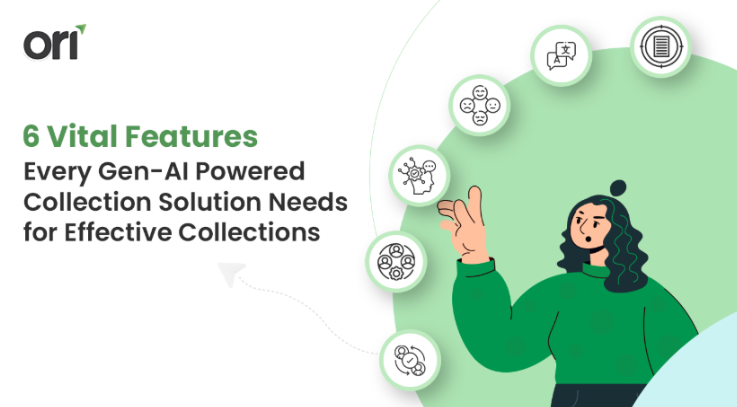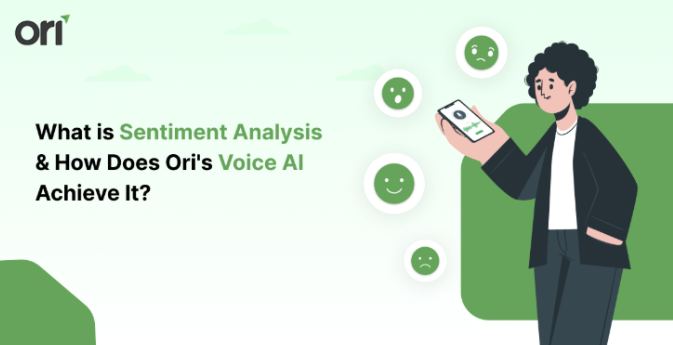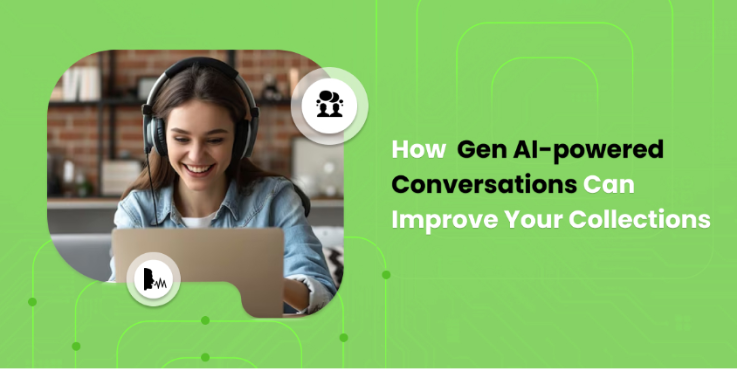Every day, businesses handle a staggering volume of customer interactions — often totaling thousands, if not millions. Analyzing these interactions manually is time-consuming, inconsistent, and leaves critical insights untapped. Incomplete feedback, inconsistent interpretation across agents, and lack of unified insights mean businesses miss opportunities to optimize services, improve agent performance, and enhance customer experiences.
This is where Speech Analytics, powered by Generative AI and machine learning, steps in. In today’s blog, we’ll dive into what speech analytics is, how it actually works, its components, and its powerful benefits. Also how Ori’s advanced speech analytics can not only improve your agent’s performance but also unify and optimize processes to elevate customer satisfaction (CSAT) over time.
What is Speech Analytics?
Speech analytics is an AI-driven technology that captures and analyzes spoken or recorded conversations to reveal actionable business insights. Evolving from basic voice recording to comprehensive, AI-powered analysis, today’s speech analytics technology leverages Generative AI, ML, and natural language processing (NLP).
This technology is used by businesses to automatically detect key patterns in conversations, offering insights into customer sentiment, compliance adherence, and more. From identifying pain points to assessing agent performance, speech analytics has broad applications across industries.
Why is Speech Analytics So Important?
Speech analytics has become essential for modern businesses, transforming customer interaction management and enabling organizations to operate at maximum efficiency. With speech analytics, contact centers can:
- Detect customer preferences, common pain points, and satisfaction indicators to continuously enhance service quality.
- Reduce compliance risks by monitoring conversations to ensure that agents adhere to regulatory and brand standards.
- Track agent performance with real-time feedback, providing actionable insights for targeted training and performance improvement.
- Streamline operations and increase cost efficiency by pinpointing areas for operational improvement.
- Differentiate from competitors by consistently delivering a seamless and satisfying customer service experience.
How Does Speech Analytics Work?
Speech analytics involves a multi-step process where advanced AI technologies capture, process, and analyze audio data to produce actionable insights.
- Audio Capture – Capturing conversations during calls, either live or recorded.
- Speech-to-Text Conversion – AI converts audio into text, adding acoustic details like tone and pitch.
- AI-Powered Analysis – Using Automatic Speech Recognition, NLP, and ML algorithms, the system analyzes transcribed data, noting keywords, sentiment, and other variables.
- Pattern Recognition – Identifies patterns in calls, such as customer concerns or repeated issues.
- Insight Generation – Provides business intelligence insights to improve CX and performance, backed by real-time or historical analysis.
What are the Different Types of Speech Analytics?
Speech analysis is generally categorized into two main types based on when the audio analysis takes place.
1. Real-time Speech Analytics:
Real-time speech analytics processes audio data during live conversations with customers, allowing agents to receive instant insights and suggestions as the call progresses. With real-time analytics, agents can access customer sentiment, tone, and conversational cues to make on-the-fly adjustments that enhance the customer experience.
Imagine this: an agent notices that a caller’s sentiment is negative and, in response, can immediately escalate the call to a specialized representative to resolve the issue swiftly. This in-the-moment insight helps agents to tailor the interaction, ultimately improving satisfaction and resolution rates in real time.

2. Post-Call Speech Analytics:
Post-call speech analytics examines the call data once a conversation has concluded. This type provides deeper, data-rich insights, including identifying recurring keywords, tracking average handle time (AHT), and analyzing customer satisfaction trends to inform long-term strategies and training.
For example, by analyzing call transcripts, quality analysts can identify the main issues discussed, pinpoint areas for process improvements, and gather metrics tied to specific timestamps to monitor patterns across multiple conversations.
Real-time vs. Post-Call Speech Analytics: What’s the Difference?
While both real-time and post-call analytics aim to optimize customer experience and interaction analysis, they differ in focus and application. Here’s a closer look at each and how they complement one another in various business scenarios:

Post-call analytics provides insights into what customers are saying and why, while real-time analytics gives a lens into how they say it, revealing underlying emotions. Together, these analytics empower businesses to offer a more personalized and responsive customer experience.
Vital Features of Ori’s Speech Analytics
Ori’s Speech Analytics provides a suite of outputs designed to convert customer interactions into actionable insights. Here are some of the key features that make this possible:
- Transcripts & Call Summary: Accurate transcriptions capture every word of the conversation, making it easy to search, review, and analyze specific sections. Call summaries offer a quick overview of key points discussed, helping supervisors get a high-level view of the conversation without diving into full transcripts.
- Agent Performance Scores: Provides evaluations across essential metrics like engagement, responsiveness, complexity, and customer satisfaction. These scores offer a comprehensive look at each agent’s effectiveness, helping with targeted training and development.
- Key Events Detection: Identifies crucial moments like escalations, agreement, dissatisfaction, or customer delight, enabling businesses to respond proactively to critical points that may require follow-up or process adjustment.
- Issue Identification & Trend Analysis: Pinpoints recurring reasons for customer calls, providing insights into common issues and motivations. This data helps optimize customer support processes and identifies areas for potential product or service enhancements.
- Detailed Segment Analysis: Breaks down conversations into relevant topics and segments, allowing teams to analyze specific conversation phases, spot patterns, and gain a more granular understanding of customer needs and sentiment.
These features empower businesses to translate spoken data into strategic insights, enhancing customer service quality, regulatory compliance, and overall operational efficiency.
Benefits of Speech Analytics
Speech analytics offers a powerful toolkit to enhance customer satisfaction, streamline operations, and drive meaningful insights across industries. Here’s how it benefits businesses:
1. Improve Customer Satisfaction:
By analyzing customer sentiment, tone, and common pain points, speech analytics enables businesses to better understand and predict customer needs. These insights drive personalized interactions and enable teams to preemptively address potential issues, resulting in higher customer satisfaction and a seamless omnichannel experience.
2. Drive Operational Efficiency:
AI-led insights surface areas for improvement within processes and resource allocation. Speech analytics identifies operational bottlenecks, enabling teams to optimize workflows, reduce costs, and allocate resources more effectively. This, in turn, minimizes inefficiencies and enhances service quality across all channels.
3. Improve Agent Performance:
Speech analytics tracks key performance metrics such as response times and customer sentiment, allowing for targeted training and real-time feedback. This helps agents refine their skills, adhere to brand standards, and elevate their performance consistently, ensuring a more reliable and quality-driven customer experience.
4. Enhanced Compliance & Risk Management:
Real-time monitoring of customer interactions ensures compliance with industry regulations and internal policies, reducing the risk of legal repercussions. Speech analytics helps teams address compliance breaches quickly, providing detailed audit trails and facilitating proactive risk management.
5. Save Time & Resources:
By automating repetitive tasks and providing immediate access to actionable insights, speech analytics significantly reduces time spent on manual processes. This efficiency in task management helps teams focus on complex issues, enhancing overall productivity and reducing operational costs.
6. Reduce Churn & Increase Retention:
With predictive insights, speech analytics identifies dissatisfaction early, enabling intervention before a customer considers switching. This proactive approach improves retention rates, builds brand loyalty, and strengthens customer relationships through more targeted and responsive service solutions.
Each of these benefits strengthens a business’s ability to respond proactively to customer needs, optimize operations, and ensure compliance, contributing to sustained growth and competitive advantage.
Applications of Speech Analytics Across Industries
- Call Center Management: Speech analytics aids in monitoring quality and optimizing agent performance through targeted training, resulting in better customer interactions.
- Banking & Finance: In the financial sector, speech analytics enhances security, monitors compliance, and improves customer service efficiency.
- E-Commerce & Retail: Retailers use speech analytics to optimize customer experiences, analyze sales performance, and gather product feedback, driving business growth.
AI-powered Speech analytics enables these industries to maintain high service standards, improve regulatory compliance, and achieve operational efficiencies by gaining insights from every customer interaction.
Wrapping Up:
Speech analytics is a transformative tool for modern businesses, offering unified insights that drive performance and enhance CX. Ori’s Gen-AI-powered speech analytics takes this further with advanced features like automated speech recognition, real-time analysis, and industry-specific pre-trained AI agents. With Ori, you gain a single source of truth that centralizes data across channels for fast, informed decision-making.
Ready to experience the difference? Schedule a demo with our experts today to explore how Ori’s solutions can elevate your customer service to new heights.


































